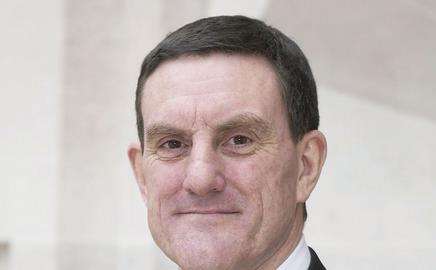ŌĆó Prince of Wales finds unlikely supporter in Peter Rees, the CityŌĆÖs long-serving head of planning
ŌĆó Rees agrees that the location of tall buildings should be better controlled
Peter Rees, the planning director of the City of London, has backed the Prince of WalesŌĆÖ attack on the ŌĆ£randomŌĆØ spread of tall buildings in London.
ReesŌĆÖ unexpected support follows a speech by Prince Charles last week in which he described a clutch of towers planned for the city as ŌĆ£a positive reaction of [carbuncles] that will disfigure and disinherit future generations of LondonersŌĆØ.
While the prince claims not to be opposed to tall buildings, several key people and organisations have this week emerged in support of his view that their location should be better controlled. As well as Rees, Baroness Kay Andrews, a minister in the communities department, has backed Prince CharlesŌĆÖ position.
Rees, who has been in charge of planning in the City since 1987, said: ŌĆØMy professional belief is that tall buildings should be clustered. If there are going to be random erections of tall buildings across London, such as along the South Bank and around Tottenham Court Road, then I share the princeŌĆÖs concerns.ŌĆØ
Rees has long been seen as an advocate of tall buildings in the City and has argued that building skyscrapers is vital to ensure that London can compete with financial centres such as New York, Hong Kong or Tokyo.
My professional belief is that tall buildings should be clustered rather than randomly erected across London
Peter Rees
Despite his support for the prince, Rees said that St PaulŌĆÖs Cathedral and the Tower of London were not threatened by tall buildings. ŌĆ£St PaulŌĆÖs is perfectly framed by the established strategic views policy, and tall buildings form a natural backdrop to the Tower of London.ŌĆØ
Speaking at last weekŌĆÖs conference hosted by Prince Charles at St JamesŌĆÖs Palace, Andrews said consultations were under way to strengthen the protection of the UKŌĆÖs 27 world heritage sites.
She said: ŌĆ£We are already consulting on the first new measure to require local authorities to refer applications to the secretary of state where English Heritage has objected to any adverse effect on the world heritage site or its setting, and we will shortly be consulting on further measures.ŌĆØ
Cabe joined in the call for ŌĆ£a stronger 3D urban design strategyŌĆØ to define where tall buildings could be considered, both in the City and many local centres. Diana Hiagh, a director at Allies and Morrison and CabeŌĆÖs director of architecture and design review, said: ŌĆ£The present London View Management Framework is a weak and leaky system that allows proposals for towers to spring up between ill-defined view corridors.ŌĆØ
Postscript
Read Martin SpringŌĆÖs views on the speech at and comment yourself using the ŌĆ£ŌĆØ link





























1 Readers' comment